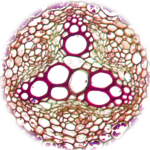Gymnosperms Slide Set SET NO.9 GYMNOSPERMS; 25 SLIDES
$159.00
GYMNOSPERMS; 25 SLIDES
Gymnosperms Slide Set
SET NO.9
GYMNOSPERMS; 25 SLIDES
1) A-237C-5 “ABIES BALSAMEA (BALSAM FIR); LEAF, CS.”
2) A-237C-1 “ABIES BALSAMEA (BALSAM FIR); STEM, CS.”
3) A-237E-1 “CUNNINGHAMIA; LEAF, CS.”
4) 10-3 “EPHEDRA; STEM, CS.”
5) 10-4A “GINKGO BILOBA; STEM, CS.”
6) A-241-3 “JUNIPERUS VIRGINIANA (RED CEDAR); LEAF, CS.”
7) A-241-2 “JUNIPERUS VIRGINIANA (RED CEDAR); OLDER STEM, WITH ANNUAL RINGS, CS.”
8) A-242-3 “LARIX LARICINA (TAMARACK); LEAF, CS.”
9) A-242-1 “LARIX LARICINA (TAMARACK); STEM, CS.”
10) A-243-2 “PICEA ABIES (NORWAY SPRUCE); LEAF, CS.”
11) A-243-1 “PICEA ABIES (NORWAY SPRUCE); STEM, CS.”
12) A-246-4 “PODOCARPUS URBANII; LEAF, CS.”
13) A-246-2 “PODOCARPUS URBANII; OLDER STEM, CS.”
14) A-246A-2 “PSEUDOTSUGA TAXIFOLIA (DOUGLAS FIR); LEAF, CS.”
15) A-246A-1 “PSEUDOTSUGA TAXIFOLIA (DOUGLAS FIR); STEM, CS.”
16) A-247 “SCIADOPITYS VERTICILLATA; LEAF, CS.”
17) A-248-3 “SEQUOIA SEMPERVIRENS (REDWOOD); LEAF, CS.”
18) A-248-2 “SEQUOIA SEMPERVIRENS (REDWOOD); OLDER STEM, CS.”
19) A-249-3 “TAXUS CANADENSIS (YEW); LEAF, CS.”
20) A-249-1 “TAXUS CANADENSIS (YEW); STEM, CS.”
21) A-249A-2 “TAXODIUM DISTICHUM (BALD CYPRESS); LEAF, CS.”
22) A-249A-1 “TAXODIUM DISTICHUM (BALD CYPRESS); STEM, CS.”
23) A-250-1 “THUJA OCCIDENTALIS (ARBORVITAE); YOUNG STEM WITH SCALE LEAVES, CS.”
24) A-251-2 “TSUGA CANADENSIS (HEMLOCK); LEAF, CS.”
25) A-251-1 “TSUGA CANADENSIS (HEMLOCK); STEM, CS.”
CS = Cross Section: So the slide shows a thin section through the transverse plane of an organism.
LS = Longitudinal Section: So the slide shows a vertical section of the organism along the longest plane.
WM = Whole Mount: So the slide shows an entire organism or structure, as indicated, is preserved on the slide
CRT = Cross Section, Radial Section, and Tangential Section: So the slide shows sections of wood along the transverse, radial, and tangential planes.
Sag = Sagittal Section: So the slide shows a thin section through the sagittal plane through the midline.
Serial Sections = So the slide shows consecutive sections of the organism.
Rep = Representative Sections (Embryology): So the slide shows one section of the organism from each typical area of study.
 Triarch Incorporated’s name is based on a botanical slide
Triarch Incorporated’s name is based on a botanical slide
that illustrates three ridges of xylem found in the vascular cylinder of the Ranunculus root.
Our founder, George H. Conant, Ph.D., had three principles in mind:
Accuracy, Service, and Dependability.
He incorporated these into the Triarch logo based on the triarch vascular cylinder.

